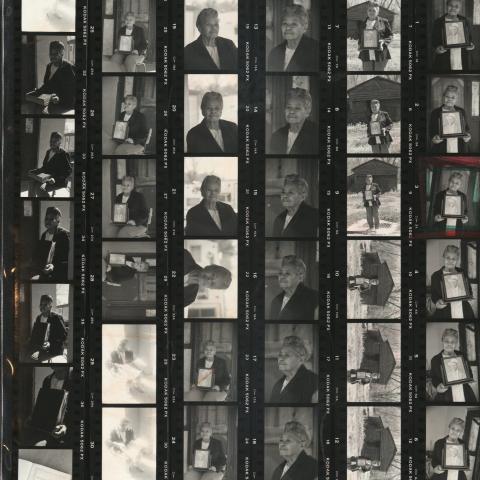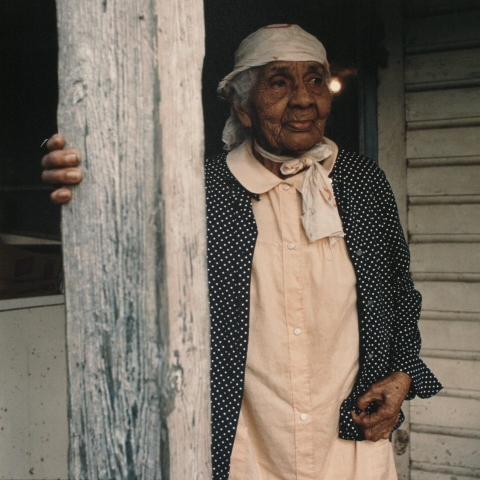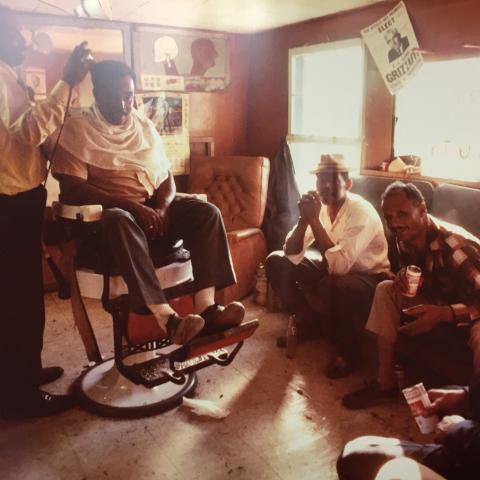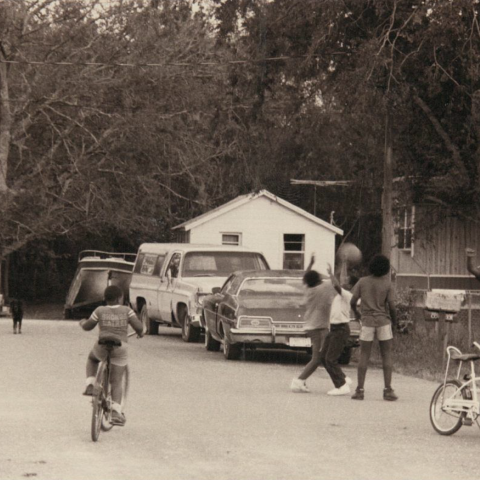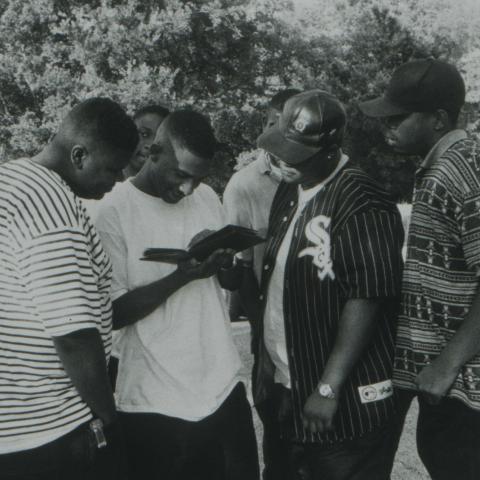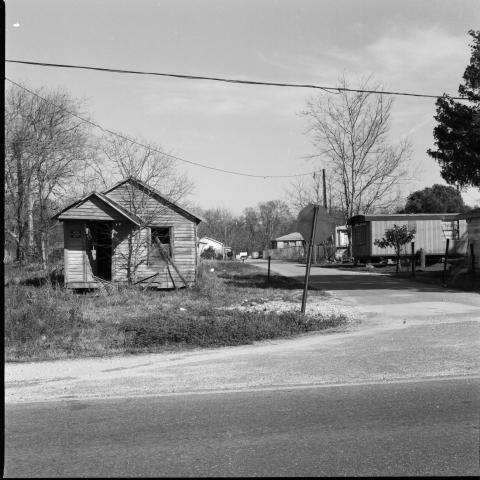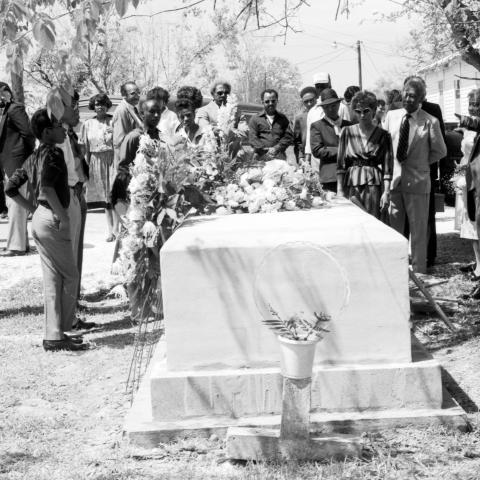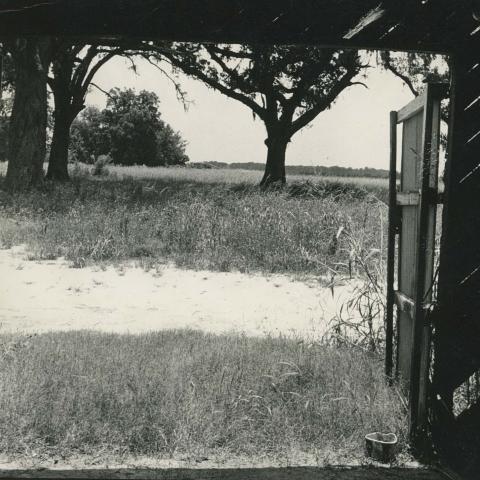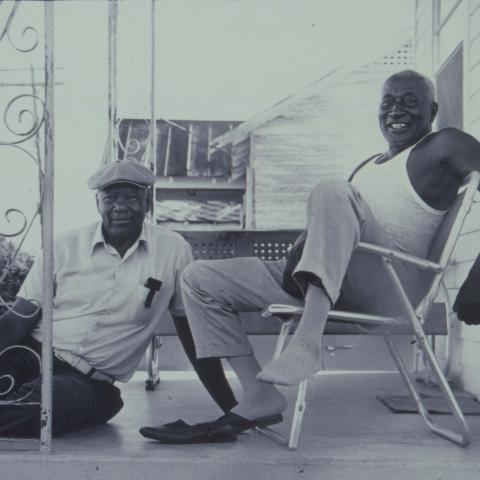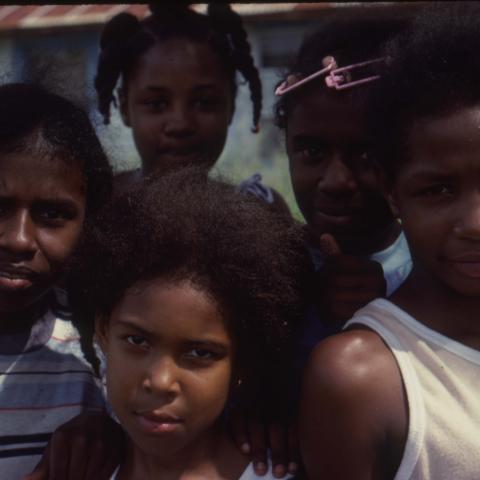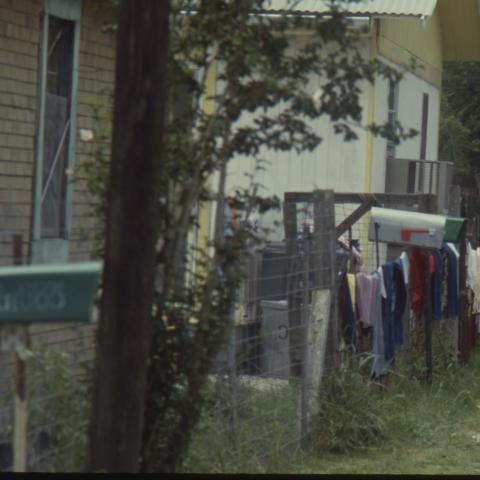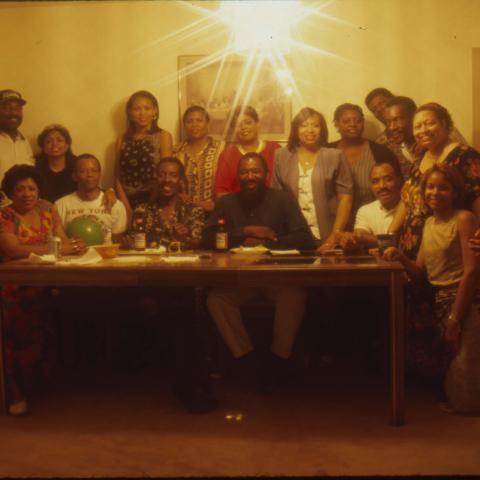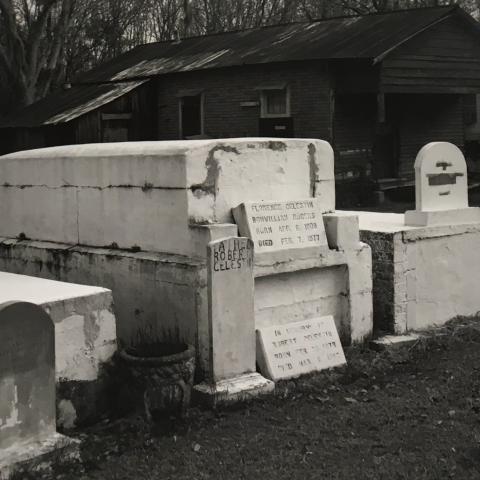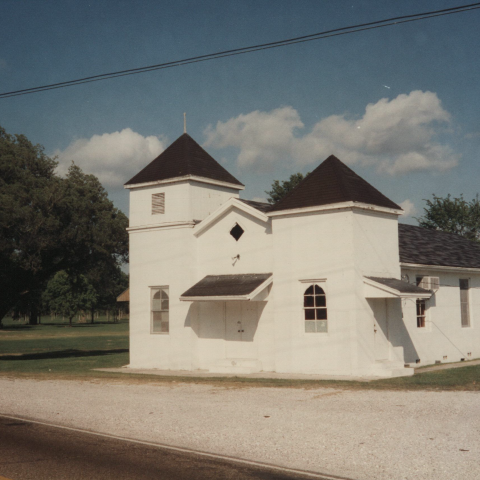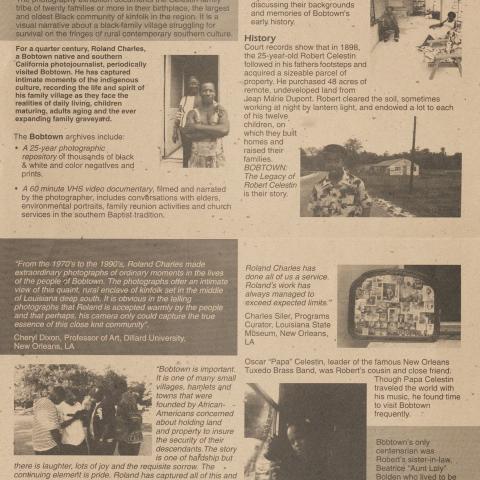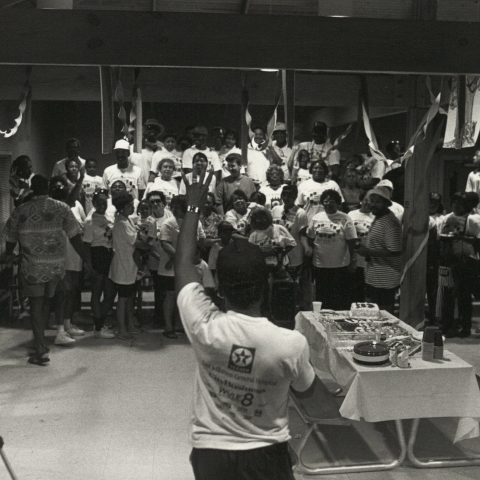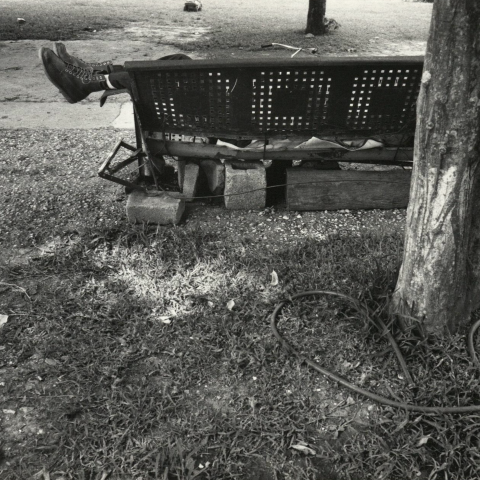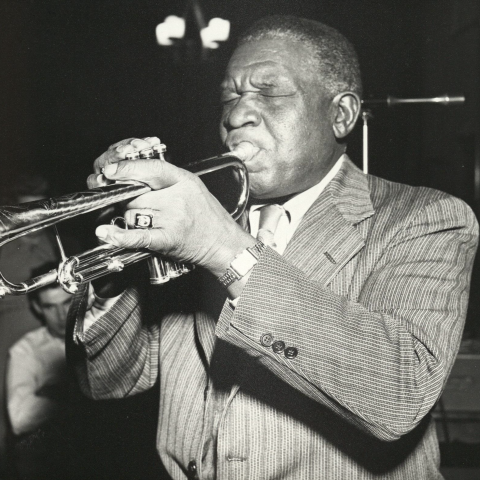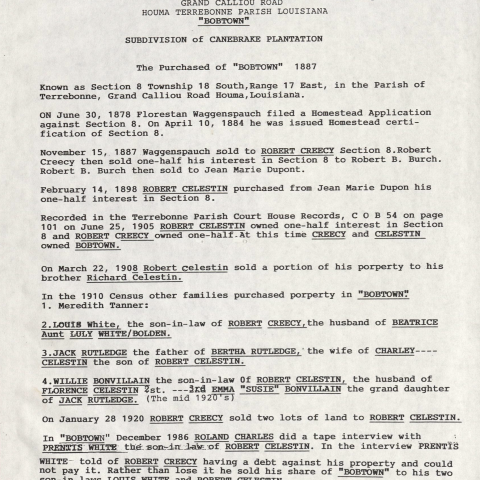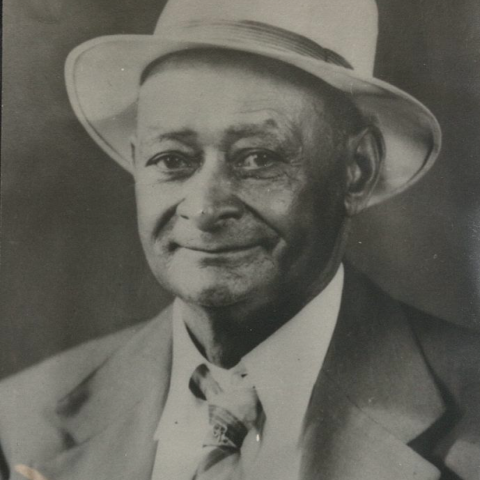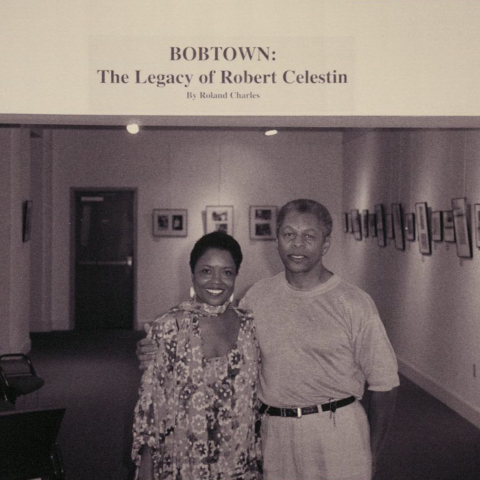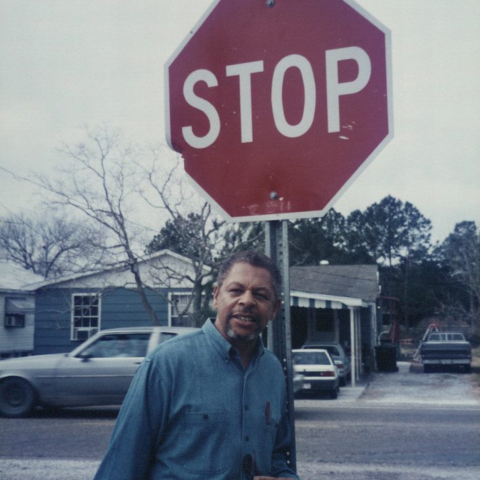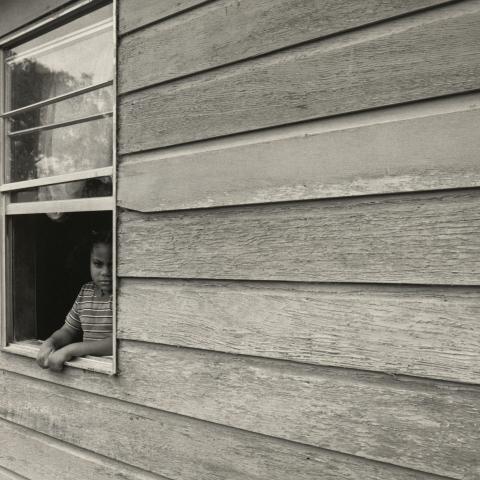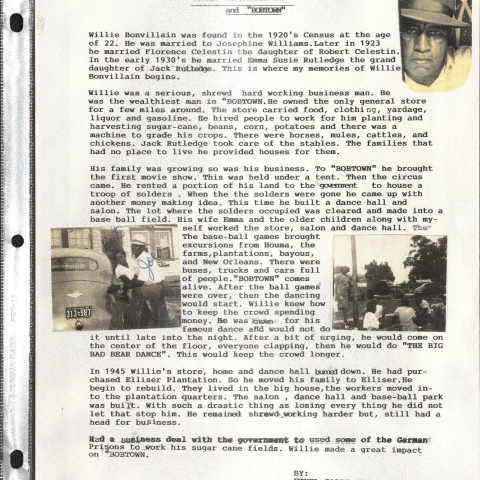Bobtown: Robert Celestin and a Louisiana Township
by Beth Peattie, Tom & Ethel Bradley Center Archivist, and Trinity Acklin, undergraduate student studying screenwriting - November 28, 2023
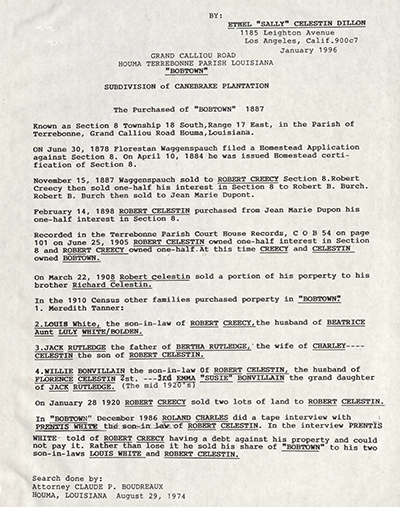 In 1887, after Reconstruction, a black man named Robert Creecy purchased a parcel of Canebrake Plantation land in Louisiana from Florestan Waggenspauch. Creecy sold half the parcel to another buyer, while retaining ownership of the remaining land. In 1898, Creecy's son-in-law, a 25-year-old black man with indigenous ancestry named Robert Celestin, purchased the half parcel of land back, and Creecy and Celestin jointly owned the land going forward. On documentation, both signed their name with “X” as neither could read or write. Celestin and Creecy cleared the fertile and somewhat marshy land, began to build homes, and declared their township Bobtown, named after their shared first name of Robert.
In 1887, after Reconstruction, a black man named Robert Creecy purchased a parcel of Canebrake Plantation land in Louisiana from Florestan Waggenspauch. Creecy sold half the parcel to another buyer, while retaining ownership of the remaining land. In 1898, Creecy's son-in-law, a 25-year-old black man with indigenous ancestry named Robert Celestin, purchased the half parcel of land back, and Creecy and Celestin jointly owned the land going forward. On documentation, both signed their name with “X” as neither could read or write. Celestin and Creecy cleared the fertile and somewhat marshy land, began to build homes, and declared their township Bobtown, named after their shared first name of Robert.
People often said it took five men to build Bobtown. After Celestin’s wife died in 1921, he divided up his land among his twelve children as they came of age. Celestin, the beloved family patriarch, died in 1952. Bobtown emerged into a community of relatives that consisted of the Celestin and Creecy families’ houses, a family-owned store, the Morning Star Baptist Church, and two taverns, one of which was called Johnny’s Bar. It was built around a tree which extended through the bar’s roof, and also included a barbershop. There was one main circular road through Bobtown that connected these structures.
The photographer Roland Charles was born in New Orleans in 1938, one of eight children born to his mother, "Sis" Gertrude Celestin McPherson. Charles grew up in Bobtown with his grandfather, Henry “Bud” Celestin, Robert Celestin’s oldest son. After joining the U.S. Airforce, he moved to Los Angeles to pursue photography professionally and to later open his own gallery, the Black Gallery, in Crenshaw. The Bradley Center houses the Roland Charles Collection, which includes a Bobtown and Louisiana series spanning the years 1937 to 2006. It consists of photography, exhibit and research materials, ephemera, and audiovisual materials, and documents members of the community, activities, and the dilapidated but mesmerizing landscape of southern Louisiana. It captures Charles’s efforts to reconstruct the history and genealogy of Bobtown while also immortalizing a community of kin at risk of disappearance. It includes several interviews with Celestin relatives, research and grant files from Charles's Louisiana exhibits on Bobtown, and images of nearby New Orleans, Marrero, Houma, and the Grand Caillou Route.
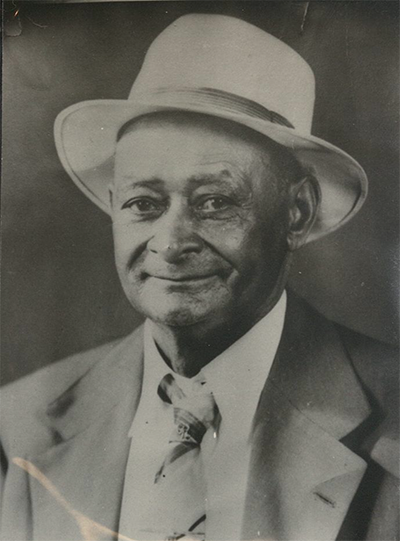 Locals that appear frequently in the series are “Aunt Lulee” Beatrice White Bolden and Willie “Putt” Bonvillian. Aunt Lulee made national news when she voted for the first time in her life at age 107, and lived to be 110. Willie “Putt” Bonvillian married Florence Celestin in 1923. Bonvillian was considered the “wealthiest” man in Bobtown owning several businesses and employing residents in farming and sharecropping. He owned the biggest general store in Bobtown, and built several establishments to attract residents, housing government soldiers, building a dance hall and baseball field, and hosting the first movie show in a tent. Oscar “Papa” Celestin, a cousin of Robert Celestin, came from a family of cane cutters in Assumption Parish before moving to New Orleans, where he became a jazz legend with the Tuxedo Brass Brand, performing regularly at the Paddock Lounge and occasionally with Louis Armstrong, who nicknamed him “Papa.” He visited Bobtown and his cousin when his schedule allowed. State representative and civil rights activist Avery Alexander was born near Bobtown on the Bayou Grand Caillou, and also visited often.
Locals that appear frequently in the series are “Aunt Lulee” Beatrice White Bolden and Willie “Putt” Bonvillian. Aunt Lulee made national news when she voted for the first time in her life at age 107, and lived to be 110. Willie “Putt” Bonvillian married Florence Celestin in 1923. Bonvillian was considered the “wealthiest” man in Bobtown owning several businesses and employing residents in farming and sharecropping. He owned the biggest general store in Bobtown, and built several establishments to attract residents, housing government soldiers, building a dance hall and baseball field, and hosting the first movie show in a tent. Oscar “Papa” Celestin, a cousin of Robert Celestin, came from a family of cane cutters in Assumption Parish before moving to New Orleans, where he became a jazz legend with the Tuxedo Brass Brand, performing regularly at the Paddock Lounge and occasionally with Louis Armstrong, who nicknamed him “Papa.” He visited Bobtown and his cousin when his schedule allowed. State representative and civil rights activist Avery Alexander was born near Bobtown on the Bayou Grand Caillou, and also visited often.
Roland Charles documented the Celestin Family Reunions between the years 1989 and 1998. The program consisted of a family church service in Bobtown, and then the actual reunion event with entertainment, cake, and socializing at the Armory in Houma. Although many relatives moved away from Bobtown in search of better economic opportunities, many returned for family dinners and the reunion. There are also exhibit prints from Charles’s 1997 exhibit "Bobtown: The Legacy of Robert Celestin.” Charles described it as a 25-year photographic journey through a 100-year-old African American community of French and indigenous ancestry. It is a visual narrative of a black family village struggling on the fringes of rural contemporary southern culture, where they face the realities of daily living, children maturing, adults aging, and the ever-expanding family graveyard.
Today, Bobtown sits astride Highway 57, the Grand Caillou Road. It is an hour's drive from New Orleans and about ten miles south of Houma. A few families still reside in Bobtown, but most have moved to larger cities for better job prospects and protection from hurricanes.
Image Gallery
Post tagged as: bradley center, archives, photographs, united states
Read more Peek in the Stacks blog entries